Panama is a small country in Central America that has worldwide importance as a transportation center. It covers the Isthmus of Panama, a narrow strip of land that separates the Atlantic and Pacific oceans near the middle of the Western Hemisphere. The Panama Canal cuts through the isthmus, connecting the two oceans. Thousands of ships use the canal each year to pass from one ocean to the other. By doing so, they avoid a long trip around the southern tip of South America. Thus, Panama plays a key role in the world’s transportation system. The country is sometimes called the Crossroads of the World because of this role.
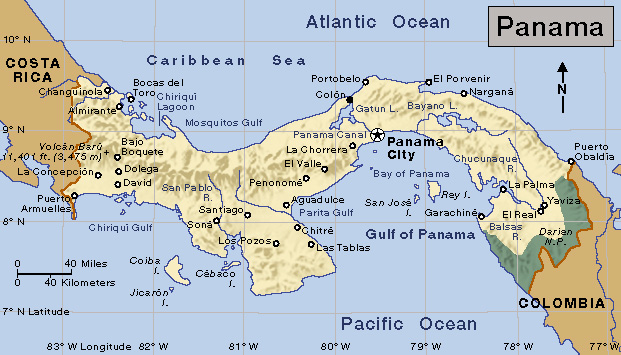
Panama lies at the southern end of North America. It and the countries of Belize, Costa Rica, El Salvador, Guatemala, Honduras, and Nicaragua make up the part of the North American continent called Central America. Panama is a narrow country that curves from west to east. The Atlantic Ocean lies to the north, the Pacific Ocean to the south, Colombia to the east, and Costa Rica to the west.
Lowlands cover the part of Panama near the Atlantic and Pacific coasts. The Atlantic coast is sometimes referred to as the Caribbean coast because it borders the part of the Atlantic Ocean that is called the Caribbean Sea. Mountains cover much of Panama’s interior, and there are jungles and swamps in the east. Panama City is the country’s capital and largest city.
More than two-thirds of Panama’s people have both Indigenous (native) and European ancestry, or European and African ancestry. Most of the rest of the people are of African, European, or Indigenous descent.
Indigenous people were the first inhabitants of what is now Panama. Spaniards conquered the Indigenous people of the area during the 1500’s and ruled Panama for about 300 years. During Spanish rule, Spain relied on Panama’s isthmus to transport goods to its South American colonies. In 1821, Panama broke away from Spain and became a province of the nation of Colombia. In 1903, it rebelled against Colombia and became an independent nation.
The United States played a major role in Panama’s history. In the 1850’s, American companies built a railroad connecting Panama’s northern and southern coasts. From 1904 to 1914, the United States built the Panama Canal. Many U.S. civilians and soldiers then moved to Panama to guard, operate, and maintain the canal. They lived in a special area bordering the canal called the Panama Canal Zone. The United States took control of the canal and the zone in exchange for payments to Panama. In 1977, Panama and the United States signed a treaty that resulted in the transfer of the Canal Zone to Panama in 1979. Also as a result of the treaty, the United States transferred control of the canal to Panama on Dec. 31, 1999. For details on the canal and the Canal Zone, see Panama Canal; Panama Canal Zone.
Government
According to its Constitution, Panama is a republic. The Constitution grants the people such rights as freedom of speech and religion. Panamanians 18 years of age or older may vote in elections.

National government
of Panama is headed by a president. The president is elected to a five-year term by the people. A Cabinet assists the president in carrying out the day-to-day operations of the government. The National Assembly makes the country’s laws. The people elect the members of the National Assembly to five-year terms.
Local government.
For purposes of local government, Panama is divided into 10 provinces; 4 territories with a substantial Indigenous population, called comarcas indígenas, that have the status of provinces; and 2 comarcas that are part of other provinces. The provinces are subdivided into municipal districts. The president appoints a governor to head each province. The people elect mayors and councils to govern Panama’s districts. Local government officials in Panama have little policymaking authority. In general, these officials simply carry out policies made by the national government.
Politics.
Panama has a number of political parties. The major parties include the Democratic Revolutionary Party and the Panameñista Party.
Courts.
The Supreme Court is Panama’s highest court. It hears appeals from lower courts. It has nine members, who are appointed by the president to 10-year terms. Panama’s lower courts include superior, circuit, and municipal courts.
Armed forces.
Panama has no regular armed forces. Security is provided by the Public Forces. These civilian forces are the National Police, the National Air-Naval Service, and the National Border Service. Service is voluntary.
People
Population and ancestry.
About two-thirds of Panama’s people live in urban areas, and the rest live in rural areas. In order of population, Panama’s largest cities are Panama City and San Miguelito. Together, these two cities have about one-fifth of the nation’s total population.
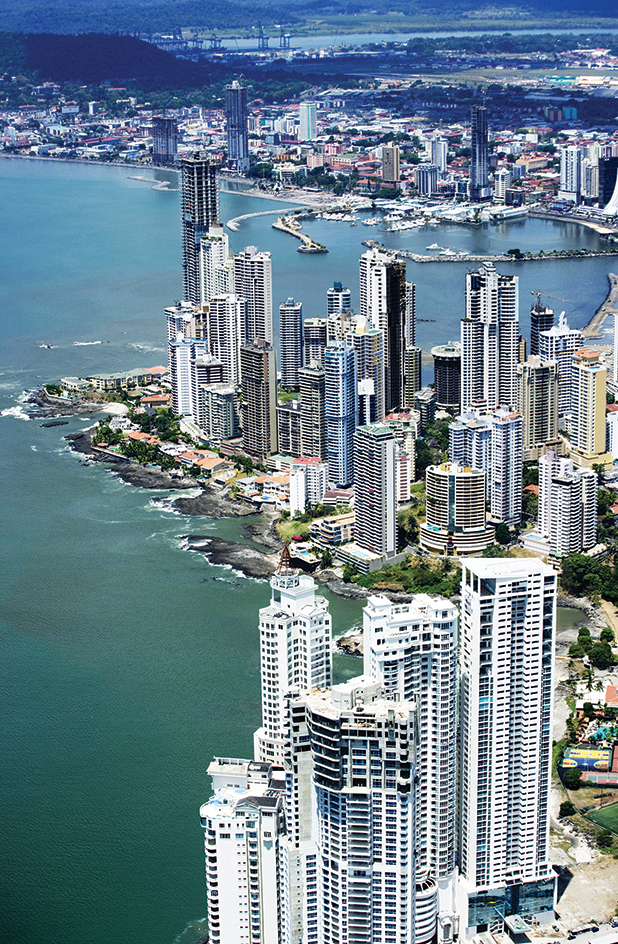
Indigenous people were the first inhabitants of what is now Panama. In the 1500’s, Spaniards arrived in the area. The Spaniards brought enslaved Africans to Panama. In the 1800’s, many people of African descent who lived in the Caribbean Islands settled in Panama. Over the years, Indigenous people, Europeans, and Africans intermarried. Today, about 70 percent of the people have both Indigenous and European ancestry, or European and African ancestry. Black people of mainly African descent make up about 15 percent of the population. White people of mainly European descent make up about 10 percent. And Indigenous people make up about 5 percent.

Way of life.
The part of Panama near the Panama Canal is a busy center of urban activity. In contrast, most of the rest of the country is made up of quiet rural areas of farms, tiny villages, and small towns.
Panama City lies at the Pacific end of the Panama Canal, and Colón is at the Atlantic end. These cities are active centers of banking, commerce, trade, and transportation. They have many modern, high-rise office buildings, as well as hotels, nightclubs, bars, and gambling establishments. The cities’ main streets are crowded with foreign traders, sailors, and tourists, as well as Panamanians. The Panama Canal and the 10-mile- (16-kilometer-) wide area that was formerly the Panama Canal Zone lie between Panama City and Colón. Through the years, people from the United States called Zonians established communities that resemble U.S. towns and suburbs in this area. The communities include Balboa and Cristóbal.
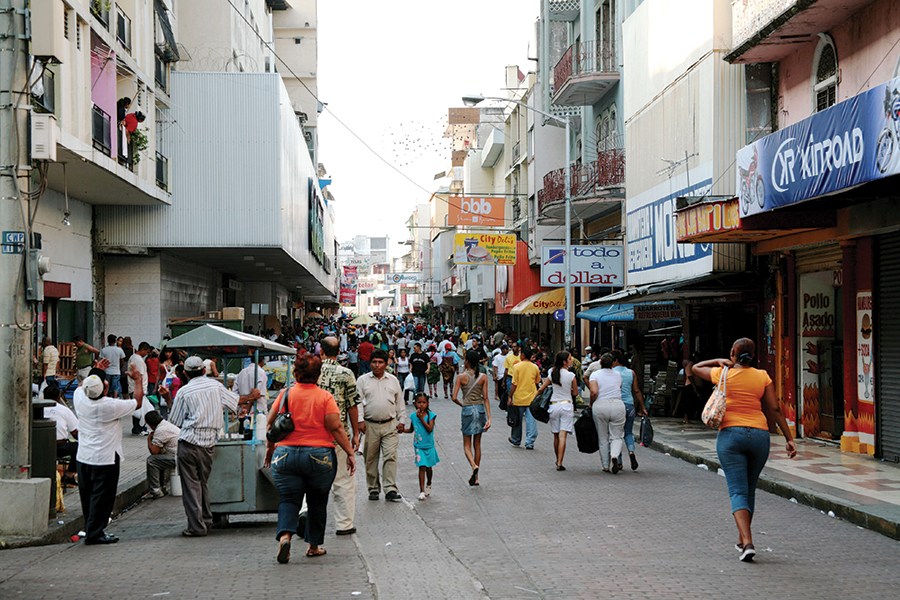
Most of Panama’s white people live in the area near the Panama Canal. Many of them are extremely wealthy. A small group of Panama’s people, most of them wealthy white people, are called the elite. Their families have had wealth for several generations. The elite take great pride in their traditions, and they tend to avoid social contact with other Panamanians. This group includes bankers, industrialists, large commercial farmers, and important doctors and lawyers.
Many other white people and many multiracial people of the Panama Canal area belong to the middle class. They include merchants, government officials, and office workers. Most of Panama’s Black people live near the canal. Large numbers of Black people are poor laborers. As in many other countries, they experience discrimination in job opportunities.
Most Panamanians who live away from the Panama Canal area are farmers. Multiracial people form the majority of the country’s farm population. They make their homes in small villages or on farm fields, primarily in the western part of the country. Many of Panama’s farmers struggle to produce enough food for their own use.
Most of Panama’s Indigenous people live in rural areas. The main groups are the Chocó, Guaymi, and Guna. Guna people who live on the San Blas Islands off Panama’s northern coast are sometimes called San Blas people. Indigenous Panamanians farm and fish for a living. 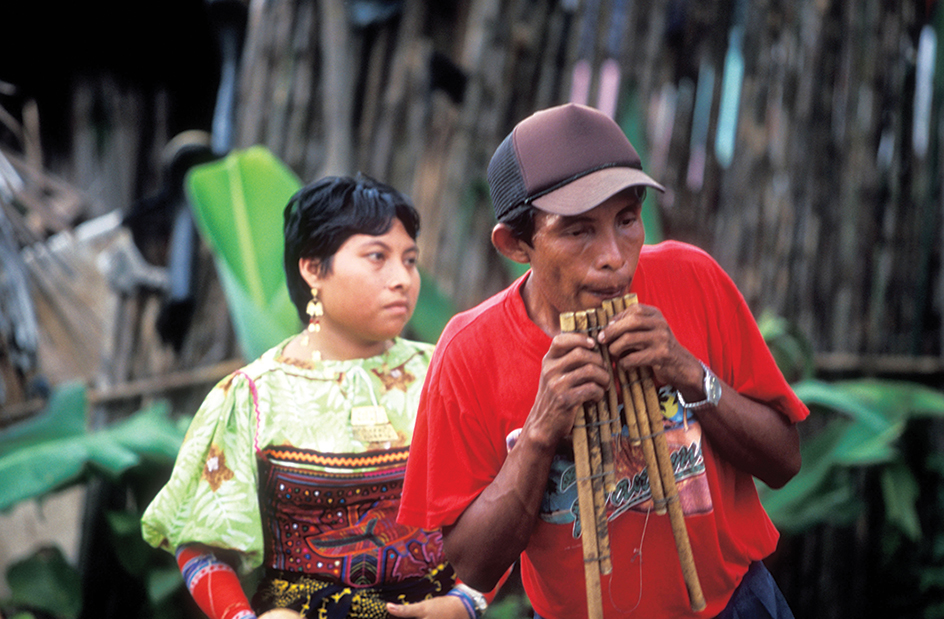
Traditionally, Panamanian women have had little opportunity for higher education or careers. They have been expected to marry early, raise large families, and manage their household. But since the mid-1900’s, more and more women have taken jobs outside the home.
Housing.
Wealthy Panamanians live in large houses built in either the Spanish colonial or a modern architectural style, or in large luxury apartments. Most middle-class people have smaller houses or apartments. Panama’s poor urban people live in shacks or run-down apartments. Most rural people live in small one- or two-room houses. Many houses near the Pacific coast have thatched roofs, and walls made from sugar cane stalks. Many houses near the Atlantic coast are made of wood. 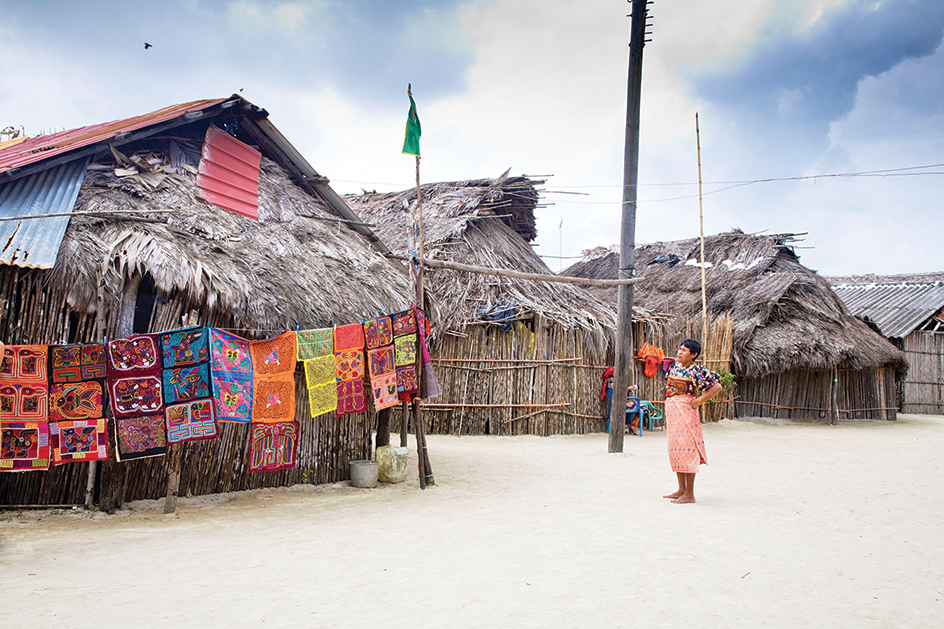
Clothing.
Most Panamanians wear Western-style clothing most of the time. On holidays and other special occasions, large numbers of people dress in special costumes. Women may wear a pollera, a white garment consisting of a blouse and long full skirt that are decorated with lace and embroidery. Or, they may wear a costume of a white blouse and brightly colored skirt called a montuna. Men may wear a montuno, which consists of a white embroidered shirt and short trousers. A camisilla (long, white shirt) and long trousers is another special costume worn by men.
Many Panamanian farmers wear straw hats while working. These hats, which are made in Panama, are sometimes mistakenly called Panama hats. But Panama hats are made in Ecuador, and are not worn by many Panamanians. They received the name Panama hats during the 1800’s, when Panama became a center for the shipment of the hats to other countries.
Panama’s Indigenous people, especially women of the San Blas group, are famous for their colorful costumes. San Blas women wear brightly colored garments that have elaborate embroideries. They also wear gold earrings and nose rings. 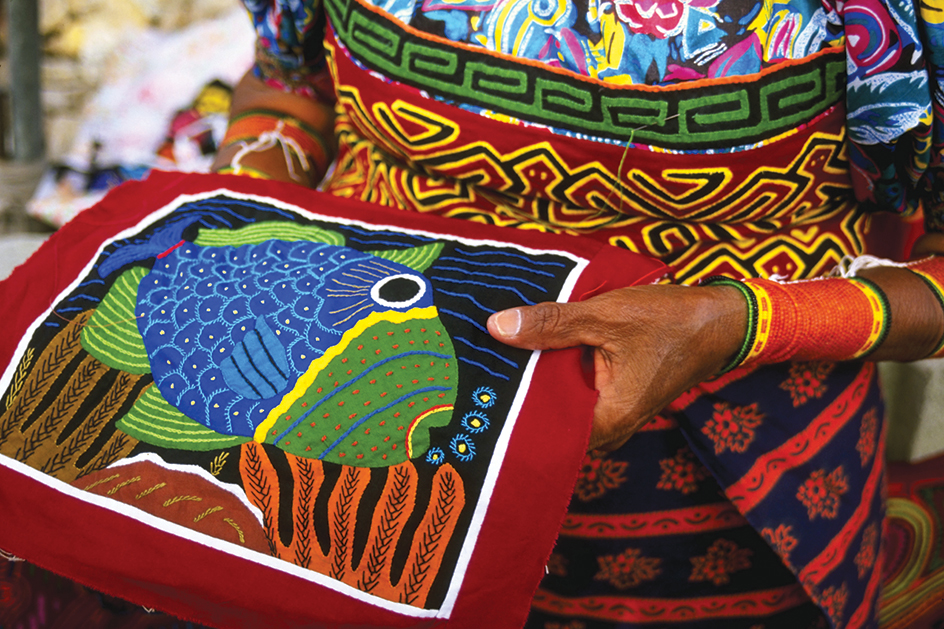
Food and drink.
Rice is the basic food of most Panamanians. Many of the people cook rice with beans to make a dish called guacho. Tortillas (flat breads made from corn or wheat flour) are a favorite food. Coffee and beer are popular beverages among Panamanians.
Recreation.
Music is a favorite form of recreation in Panama. Most Panamanians enjoy musical performances, and many play instruments for recreation. Celebrations called fiestas are held on holidays. Fiestas feature religious rituals, dancing, music, and special meals. Baseball is the most popular sport in Panama, and basketball is also popular. Panamanians learned about these sports from U.S. citizens who moved to the country after the canal opened. Soccer is also popular.
Languages.
Spanish, Panama’s official language, is spoken by nearly all the people. Some Indigenous groups use their own local language in addition to Spanish. Many Panamanians can speak English.
Religion.
About 85 percent of Panama’s people are Roman Catholics. Most of the rest of the people are Protestants. The Catholic Church plays an important role in Panama. Church services and celebrations are both religious and social events for many of the people.
Education.
Almost all of Panama’s adults can read and write. Panamanian law requires children to attend school from the ages of 6 to 15, or until they complete the sixth grade. But about half the children leave school before completing the requirement. Most are from poor families and leave school to begin work. About half the students who complete the sixth grade also complete high school. Panama has several universities. The oldest and largest is the University of Panama, founded in 1935 in Panama City.
Land and climate
Panama covers the Isthmus of Panama, which has an area of 29,762 square miles (77,082 square kilometers). The isthmus extends about 410 miles (660 kilometers) from west to east. From north to south, it measures only about 130 miles (209 kilometers) at its widest point and 30 miles (48 kilometers) at its narrowest point.
The Panama Canal cuts through the center of the country, dividing the land into eastern and western sections. About 98 percent of the people live near the canal or in the part of the country west of it. Swamps and jungles cover much of Panama east of the canal. Only about 2 percent of the people, chiefly Indigenous people, live in the east.
Many wild animals live in Panama. They include caimans, fer-de-lance, jaguars, monkeys, ocelots, pumas, and parrots and other tropical birds. Pine trees are abundant in Panama’s mountains. Banana plants and cacao trees are grown in many parts of the country.
Panama has three land regions—the Central Highland and coastal lowlands called the Atlantic Lowland and the Pacific Lowland.
The Central Highland
is a mountainous region. The Tabasara Mountains extend eastward from the Costa Rican border. The Boquete district, not far from the border, historically has been an important coffee-producing region and a vacation spot for wealthy Panamanians. The country’s highest peak, 11,401-foot (3,475-meter) Volcán Barú rises near the border. The mountain range decreases in height as it extends eastward. It is made up of low hills near the Panama Canal. Panama’s land rises to mountains again east of the canal. The San Blas Mountains and Darién Mountains, the main ranges in the east, reach heights of about 6,000 feet (1,800 meters). Valleys between the mountains in western Panama provide much good farmland.
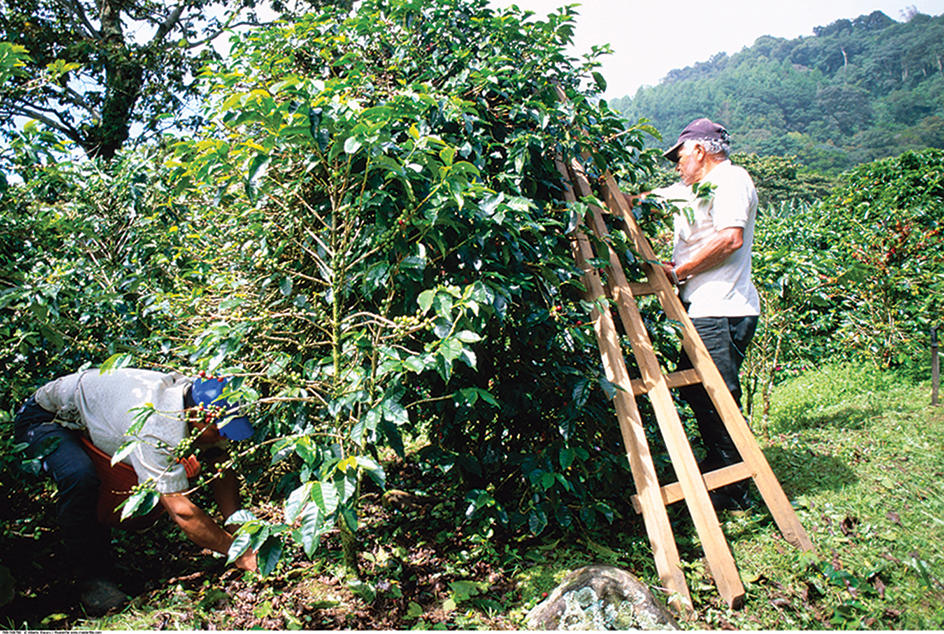
The coastal lowlands
are narrow areas that lie along Panama’s Pacific and Atlantic coasts. The Pacific Lowland has much fertile farmland, which is chiefly in the west. The Atlantic Lowland is less fertile.
Coastline and islands.
Panama’s Pacific coastline measures 746 miles (1,201 kilometers). The Atlantic coastline is 397 miles (639 kilometers) long. About 800 islands that lie near the coasts are part of Panama’s territory. The largest ones are Coiba Island and Rey Island, both off the Pacific coast.
Rivers and lakes.
Panama has about 500 rivers. But only one river, the Tuira, is navigable for long distances. The Tuira flows for 125 miles (201 kilometers) in eastern Panama. Panama has no large natural lakes. Its largest lake is the 163-square-mile (422-square-kilometer) Gatun Lake, which was created by the builders of the Panama Canal and forms part of the canal route.
Climate.
Most of Panama has a warm, tropical climate that varies little from season to season. Temperatures in the lowlands average about 80 °F (27 °C). Mountain temperatures average about 66 °F (19 °C). The Atlantic side of Panama receives about 150 inches (381 centimeters) of rain annually. About 68 inches (173 centimeters) of rain falls on the Pacific side yearly.
Economy
Economic activity in Panama varies according to location. Near the Panama Canal, the economy is based on business generated by the waterway, and on commerce, manufacturing, trade, and transportation. In most of the rest of Panama, the economy is based on agriculture. The economy operates as a free enterprise system.
The Panama Canal
is the most important single factor in the country’s economy. Tolls from ships that pass through the canal contribute billions of dollars annually to the Panamanian economy. The Panama Canal also directly and indirectly provides jobs for many Panamanians. The jobs include positions related to the operation and maintenance of the canal. They also include jobs in stores and other businesses that exist because of the economic activity generated by the canal.
Commerce and trade
flourish near the Panama Canal. Colón and Panama City rank among Latin America’s chief banking centers. Colón has a Free Trade Zone, where merchants can import and export goods without paying duties (taxes). Many merchants send goods to Colón and then export them to other nations to save money. Thousands of import and export companies operate in the Free Trade Zone.
Manufacturing
plays a small role in Panama’s economy. Most of Panama’s manufacturing firms are near the Panama Canal, between Colón and Panama City. The country has few large manufacturing industries. Its chief products include cement and food and beverage products, especially beer and sugar.
Agriculture
is important to Panama’s economy. Most farmers farm a small plot of land and use old-fashioned agricultural equipment and methods. The majority of the farmers produce only subsistence crops—that is, crops raised by farmers for their own use. Rice is the main subsistence crop. Cash crops are those that are raised for sale. Leading cash crops include bananas, coffee, pineapples, and sugar. Cattle are raised for beef and milk. Panamanian farmers also raise chickens for eggs and meat and hogs.
Most Panamanians who raise subsistence crops own or rent their farms. But many of them are squatters. Squatters neither own nor rent the land they farm. Instead, they simply settle on land owned by the government or private citizens and farm it. Most of Panama’s cash crop production takes place on large farms owned by wealthy landowners. The landowners hire agricultural workers to farm their land.
Fishing.
Anchovetta, herring, shrimp, and tuna are among Panama’s leading fishing catch. Aquaculture, the commercial raising of animals and plants that live in water, is a growing industry in Panama. Shrimp are the leading aquaculture product. Fish are an important export.
Mining
contributes little to Panama’s economy. Panama’s small mining industry centers around the production of clay, gold, lime, and salt. Large copper and silver deposits are undeveloped.
International trade.
Panama imports more than it exports. Imports include chemicals, food products, machinery, medicines, motor vehicles, and petroleum products. Machinery and medicines are among Panama’s chief exports. China and the United States are Panama’s chief trading partners. Panama also carries on much trade with Colombia, Costa Rica, and Mexico.
Transportation and communication.
Panama is a major center of international transportation by sea and air. Thousands of ships pass through the Panama Canal yearly. Cristóbal, a suburb of Colón; and Balboa, a suburb of Panama City, are busy international ports. An international airport is at Tocumen, near Panama City.
Panama’s merchant marine is the largest in the world. Shipping lines of other countries own most of the ships. These companies register the ships in Panama because Panama allows them to pay lower taxes and wages than do their own countries, and also in order to avoid some safety regulations.
Most of Panama’s road system is unpaved. Most rural roads in Panama have a dirt surface. The country’s major road is the Panamanian section of the Pan American Highway. It runs from the Costa Rican border to the eastern part of the country. Another important road in Panama is the Trans-Isthmian Highway between Colón and Panama City.
Panama has several daily newspapers. The government owns a television station that runs educational programming. There are also many privately-owned radio and TV stations. Panama enjoys a relatively high level of freedom of the press.
History
Early days.
Indigenous people were the first inhabitants of what is now Panama. Few early records of these people exist, and scholars do not know when they first settled in the area. The Indigenous people farmed, fished, and hunted.
The Spanish colonial period.
Spain took control of what is now Panama from the Indigenous people during the early 1500’s. In 1501, Rodrigo de Bastidas, a Spanish explorer, became the first European to reach the area. In 1502, Christopher Columbus, an Italian navigator employed by Spain, landed in what is now Panama. He claimed the area for Spain. A group of Spanish soldiers and colonists reached Panama in 1510. The Spaniards established colonies along the Atlantic coast. The Indigenous people told the Spaniards of a large body of water that lay across the Isthmus of Panama, not far away. The body of water was actually the Pacific Ocean. Vasco Núñez de Balboa, acting governor of Spain’s colonies, led an expedition across the isthmus. On Sept. 25, 1513, he became the first European to see the eastern shore of the Pacific.
The fact that Panama was only a narrow strip of land between the Atlantic and Pacific made the area important to the Spaniards. Sailing from military bases they established along the Panamanian Pacific coast, the Spaniards explored the west coast of Latin America. They conquered many of the Indigenous lands they reached. The most important conquest took place in the 1530’s, when Spaniards led by Francisco Pizarro sailed from Panama and defeated the Inca of Peru. They took gold and other riches from the Inca and from other Indigenous groups. Spain built a stone road across Panama to transport the riches from the Pacific to the Atlantic coast. The riches then were shipped to Spain.
The Spaniards did little to develop Panama’s economy. They treated the Indigenous people harshly and killed many of them. Under Spain, Panama became a center for the distribution of enslaved Africans in the Western Hemisphere.
In the 1600’s, Henry Morgan of England and other pirates attacked Spanish ships and towns in Panama. Many Spanish ships carrying goods from Peru began sailing around the tip of South America to avoid the pirates. Panama declined as a transportation center.
Colombian rule.
Colombia gained independence from Spain in 1810. In 1821, Panama broke away from Spanish rule and became a province of Colombia.
A gold rush began in California in 1848. People from the Eastern United States began sailing to Panama, crossing the isthmus to the Pacific, and then sailing on to California to reach the gold rush area.
Businessmen from the United States built a railroad across Panama to speed up passage across the isthmus. The railroad was completed in 1855, and Panama again became a busy transportation center.
Many laborers from other lands moved to Panama to help build the railroad. They included thousands of Black people from the Caribbean Islands. Many of the Black laborers settled permanently in Panama.
Relations between Panama and the rest of Colombia were always strained, and, beginning in 1830, Panamanians staged several revolts against Colombia. In 1903, Colombia refused an offer by the United States to build a canal across Panama. Panama, encouraged by the United States, then revolted against Colombia. It became an independent nation on Nov. 3, 1903. The United States hoped to gain approval from the newly independent country to build the canal. It sent ships and troops to protect the new government against an overthrow by Colombia. The United States, with Panama’s approval, then began building the canal.
Progress as a nation.
The Panama Canal was opened on Aug. 15, 1914. It brought prosperity to the part of Panama near the waterway. The United States established the Panama Canal Zone there. The economies of the Canal Zone, Colón, and Panama City flourished. Many Panamanians moved to the canal area to find jobs. But the changes near the canal had little effect on other parts of Panama. Most of the country remained rural and underdeveloped.
Political rivalries brought instability to Panama’s government during the early and mid-1900’s. The government changed hands many times.
Relations with the United States.
Many Panamanians opposed U.S. control of the Panama Canal and Canal Zone. They demanded Panamanian control. In the 1950’s and 1960’s, Panamanians staged many demonstrations and some riots against the continued U.S. presence. These protests culminated on Jan. 9, 1964, when nearly two dozen Panamanian students died in clashes with U.S. military personnel.
In 1968, Omar Torrijos Herrera, a military officer, took over the government of Panama and began to rule as a dictator. He strengthened the movement to end U.S. control of the canal and Canal Zone. In 1977, Panama and the United States signed a treaty designed to end U.S. control. The treaty resulted in the transfer of the Canal Zone to Panama in 1979. It also provided for the transfer of the canal itself to Panama on Dec. 31, 1999.
The Noriega years.
General Torrijos gave up control of Panama’s government in 1978. Civilian leaders took over, but Torrijos kept much power as head of the military. Torrijos died in a plane crash in 1981. The military continued to hold much power after his death.
In 1983, General Manuel Antonio Noriega became head of the military and Panama’s most powerful leader. In 1987, a former aide of Noriega accused him of election fraud in the 1984 presidential election, killing a political opponent, and making large amounts of money through corruption. In 1988, two U.S. federal grand juries in Florida formally charged Noriega with drug trafficking and racketeering in the United States. Panamanian President Eric Arturo Delvalle dismissed Noriega from his military command, but Noriega supporters forced the president from office. The U.S. government denounced this action. It imposed extreme economic sanctions against Panama and called for Noriega’s resignation. 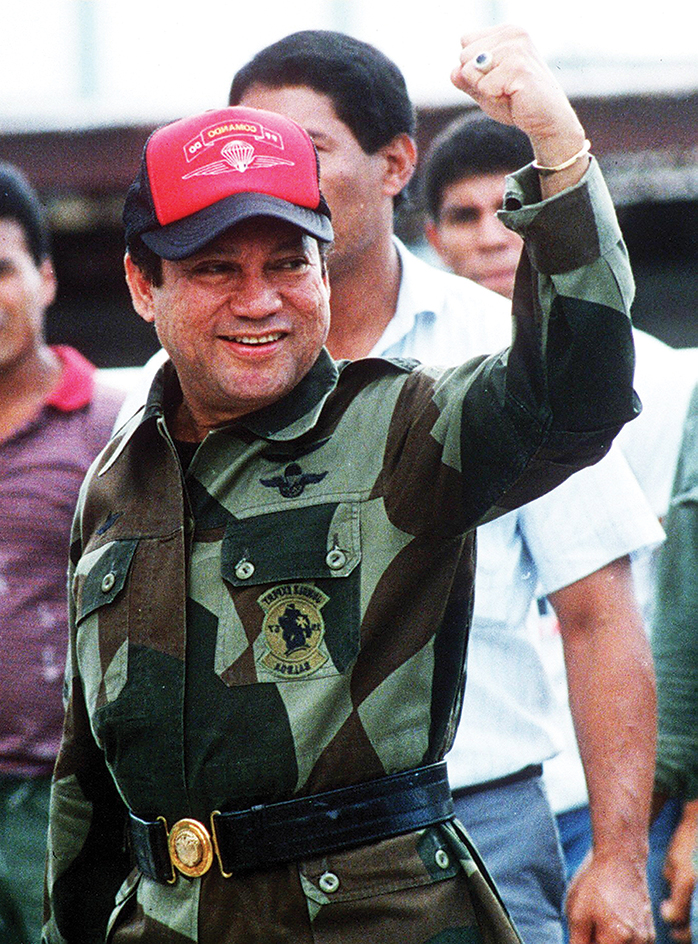
In 1989, Panama held a presidential election. Guillermo Endara, a politician opposed to Noriega, apparently won the election. But the Panamanian government declared the election invalid. On Oct. 3, 1989, a group of Panamanian soldiers tried to overthrow Noriega, but failed. The United States provided minor aid to the rebels by blocking some key roads. In December 1989, Panamanian soldiers killed a United States marine lieutenant. Mentioning this incident and the drug trafficking charges, U.S. President George H. W. Bush ordered troops into Panama to overthrow Noriega.
The 1990’s.
In January 1990, Noriega surrendered to U.S. officials, and Endara was named president of Panama. A new civilian government was formed. In 1992, Noriega was convicted in the United States on charges of drug trafficking, money laundering, and racketeering. He was sent to prison.
In 1994, Ernesto Pérez Balladares was elected to succeed Endara as president. In 1999, Mireya Moscoso became the first woman to be elected president of Panama. Also that year, on December 31, the United States handed over control of the Panama Canal to Panama. 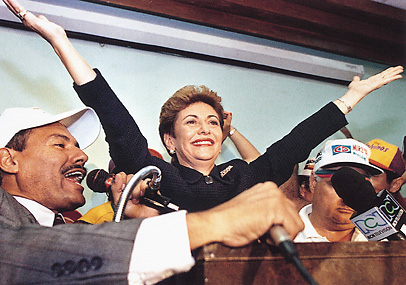
The transfer of the Panama Canal from U.S. to Panamanian control resulted in some challenges for Panama. Although the United States maintained some influence over the protection of the canal, Panama became responsible for its maintenance and for protecting the surrounding rain forests. These forests provide the water used to lift and lower ships in the canal locks.
The 2000’s.
Martín Torrijos Espino, the son of former dictator Omar Torrijos Herrera, was elected president of Panama in 2004. He represented the center-left Democratic Revolutionary Party (PRD). The conservative businessman Ricardo Martinelli, of the Democratic Change party, was elected president in 2009. Under Martinelli, Panama experienced strong economic growth. Panamanians elected Vice President Juan Carlos Varela as president in 2014. Varela, a political opponent of Martinelli, belonged to the Panameñista Party. In 2019, businessman Laurentino Cortizo of the PRD was elected president in a close race.
Former dictator Manuel Noriega finished serving his U.S. prison sentence in 2007. In 2010, he was sent to France, where he was sentenced to seven years’ imprisonment for money laundering. In 2011, France extradited (handed over) Noriega to Panama, where he began serving a prison sentence for crimes committed when he ruled that country. Noriega died in 2017.
In 2016, Panama completed a $5.25-billion expansion of the Panama Canal. The canal was modified to accommodate larger ships and increase its capacity for traffic.
José Raúl Mulino was elected president of Panama in 2024. He had close ties to former president Ricardo Martinelli.
